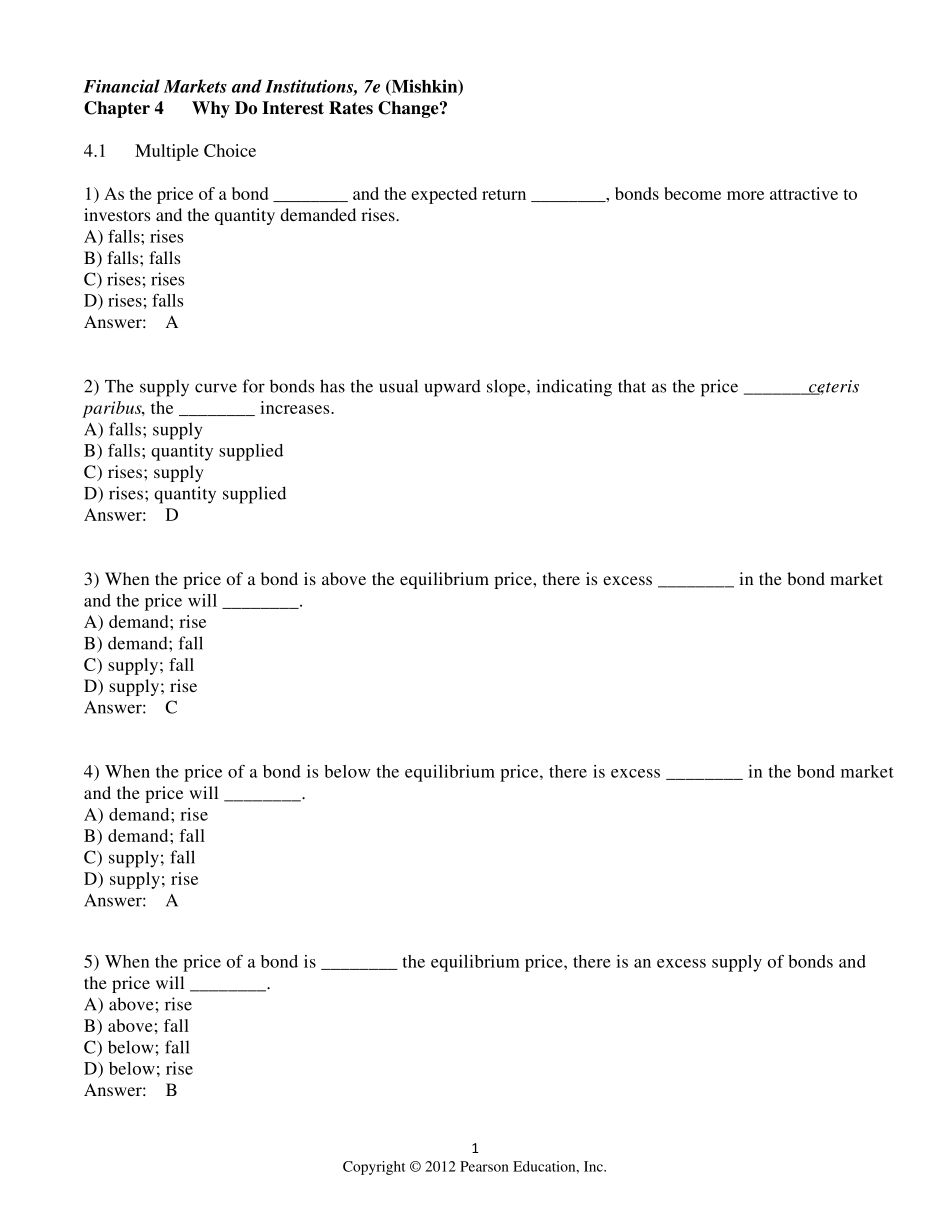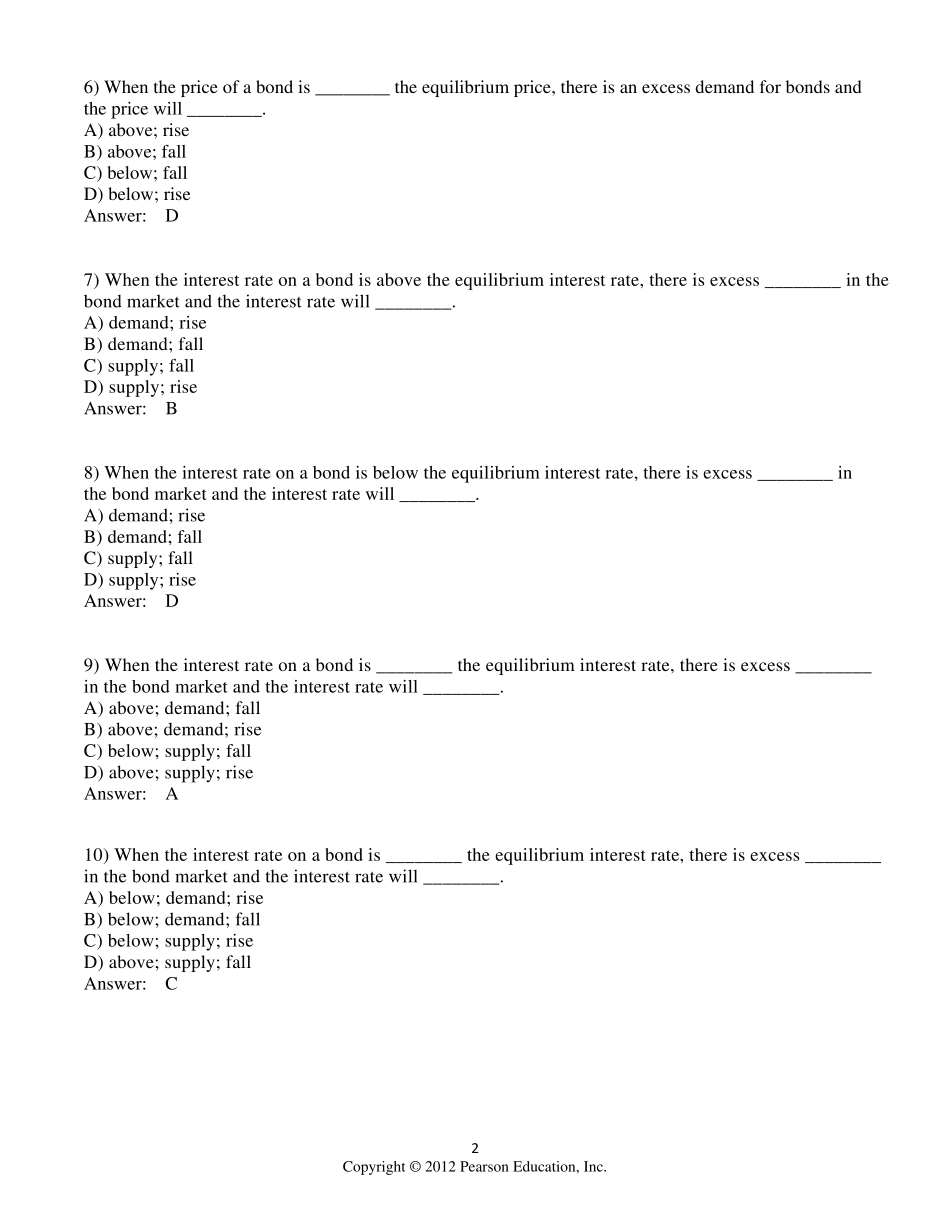1 Copyright © 2012 Pearson Education, Inc. Financial Markets and Institu tions, 7e (Mishkin) Chapter 4 Why Do Interest Rates Change? 4.1 Multiple Choice 1) As the price of a bond ________ and the expected return ________, bonds become more attractive to investors and the quantity demanded rises. A) falls; rises B) falls; falls C) rises; rises D) rises; falls Answer: A 2) The supply curve for bonds has the usual upward slope, indicating that as the price ________, ceteris paribu s, the ________ increases. A) falls; supply B) falls; quantity supplied C) rises; supply D) rises; quantity supplied Answer: D 3) When the price of a bond is above the equilibrium price, there is excess ________ in the bond market and the price will ________. A) demand; rise B) demand; fall C) supply; fall D) supply; rise Answer: C 4) When the price of a bond is below the equilibrium price, there is excess ________ in the bond market and the price will ________. A) demand; rise B) demand; fall C) supply; fall D) supply; rise Answer: A 5) When the price of a bond is ________ the equilibrium price, there is an excess supply of bonds and the price will ________. A) above; rise B) above; fall C) below; fall D) below; rise Answer: B 2 Copyright © 2012 Pearson Education, Inc. 6) When the price of a bond is ________ the equilibrium price, there is an excess demand for bonds and the price will ________. A) above; rise B) above; fall C) below; fall D) below; rise Answer: D 7) When the interest rate on a bond is above the equilibrium interest rate, there is excess ________ in the bond market and the interest rate will ________. A) demand; rise B) demand; fall C) supply; fall D) supply; rise Answer: B...


